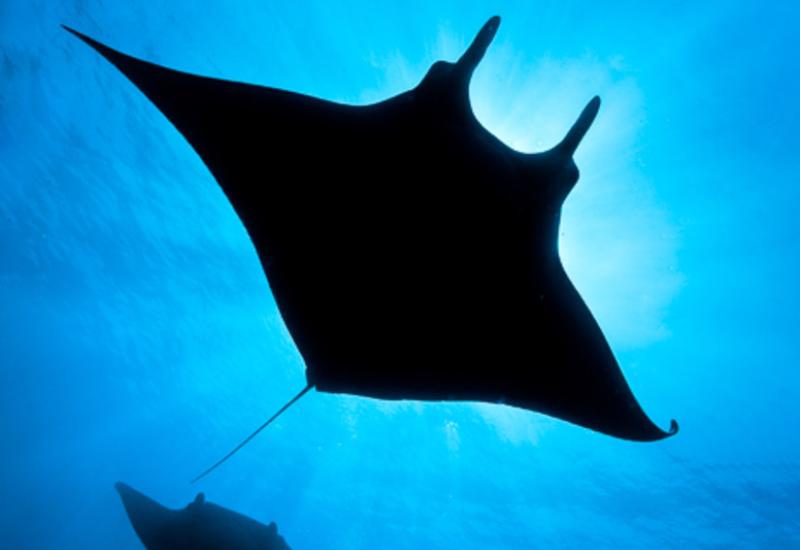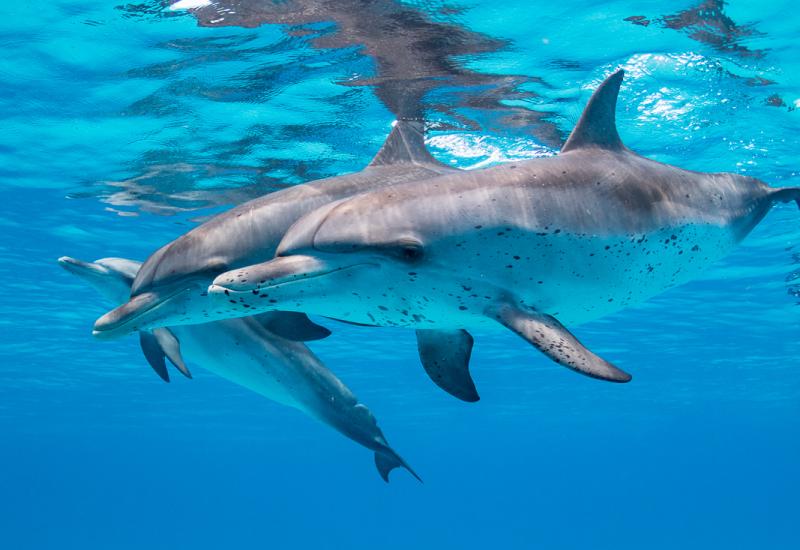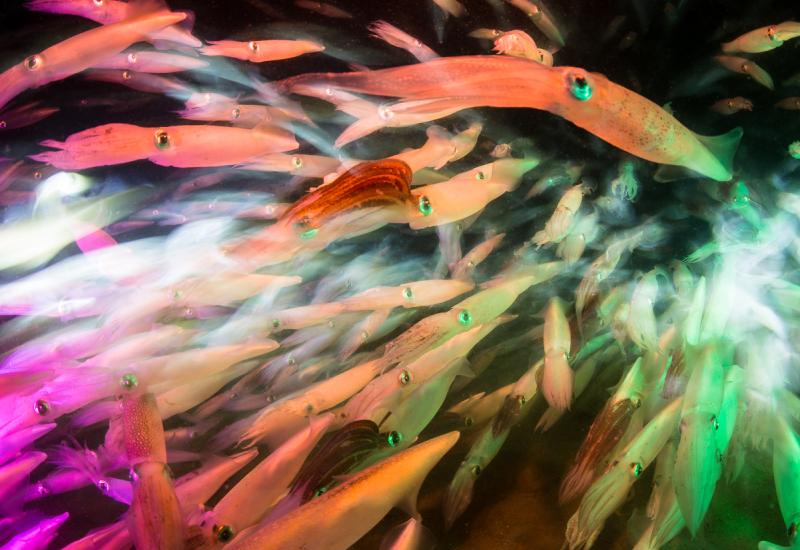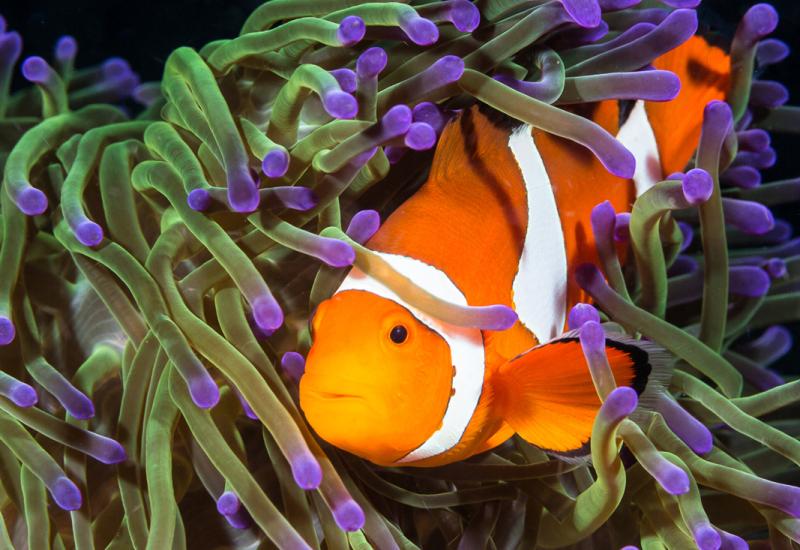The Mind of Conor Culver
To enter this year's contest, view all photo submissions so far and see an updated list of prizes, click right here.
Freakier than any dive site, Conor Culver's surreal photographic creations fire the imagination. Culver creates dreamscapes that mash up underwater and topside, many of which he entered into the 2014 Through Your Lens photo competition. His submissions were so unusual that editors decided to spotlight the 28-year-old Colorado artist, a certified diver since he was 12.
Let's start with the basics.
I'm 28 years old and born and raised in Golden, Colorado.
Where do you get the ideas for your Underwater Surrealism series?
Some of my ideas are planned ahead, but always comes down to being able to actually get the shot. Most of the ideas for the images come after I photograph the animal. I think about something interesting about the animal, whether it’s the name of it, how it behaves in the wild, or the look of the animal that will begin to spark ideas in my mind. Some ideas come quickly, while others take time to develop. My dreams come out in my work as well; many of my dreams are of underwater life and the animals.
How do you decide what critters to place in what scenes?
Every image has its own meaning towards that specific animal. For example, a moray is similar to a snake or an eagle ray is similar to an eagle or hawk. I try to relate the underwater with the above water. I always want to convey something about that animal that is true in the ocean and then bring that story into a scene above the surface.
Do you shoot both the topside and underwater pieces?
Yes, I shoot all the images. I search for places to shoot in Colorado or when I'm traveling. I always have my camera on me when I travel. I photograph as much as I can. I might not use the background immediately or know what to use it for at the time, but I may use it eventually for an image. Some of my images are set up in my studio, for example the image "Ink of the Octopus" was shot on a blank journal with spilled ink with my lights set up the exact way I wanted.
What was the first pairing you did of an undersea critter in a terrestrial scene?
The first time I ever did a surreal scene with underwater imagery was a self-portrait of me holding a vase and a shark swimming inside the vase. It wasn’t until about three years later that I began to develop my ideas more vividly. I just started off creating surreal images for a long while of all different kinds of imagery, but ultimately developed the idea for Underwater Surrealism in my thesis semester at University of Colorado Denver.
My very first image in Underwater Surrealism was "Birth of a Seahorse" which really changed the way I approached my surreal work. I found my way to combine fine art with underwater photography. For this image, I cracked open an egg and built a bird's nest, then in Photoshop I took an image of a seahorse from Curacao I had photographed and edited the seahorse to look like it is hatching from the egg. The meaning is to play off how weird it is that the males are the ones who give birth. After this image, I finally found my style that I wanted to continue on with.
Have you ever shot a critter you wanted to use but just couldn’t make work in a terrestrial scene?
It happens all the time. Since I can't make the animals pose for me I am always limited by what I can get underwater or the way the animal is positioned creates many issues editing. Sometimes I can fix it, other times I'll have to leave that idea alone till I get another photo that will work. One example of when I had a problem is blending a spotted cleaner shrimp into a doorway because the shrimp is mostly transparent. No matter what I did, the shrimp never looked right blended into the doorway because it was so transparent and would get lost in the background.
What’s a typical viewer reaction to your work?
I usually have a positive response to my work. I've had divers who have very purist view to underwater photography that say they enjoy my work. They like it because it is different, they like it because the images are manipulated and they know that they are not real but their mind is tricked into believing the images. The main criticism I often get is "this is not photography" because photography is supposed to depict something real, but my response is that I am over photographic because I utilize all the tools I can and explore everything photography can do. As my favorite artist Jerry Uelsmann said, “The camera is a license to explore.” I use all the tools I can to explore everything photography has to offer which is why my reply is that I am over photographic.
Do divers react differently from nondivers?
Absolutely, divers often get what I'm saying about the animals and why they are in those scenes. Many times they even say they've had dreams like my images. Divers are attracted to seeing these animals in a new way. Non-divers usually have to ask what I'm trying to convey in the images, but they are still intrigued by my work.
Do you have a favorite among your undersea creations?
My favorites in the series are "Eagle Hunt" and "Ocean's Hospital." "Eagle Hunt" was a really lucky shot in Little Cayman of the eagle ray that stopped for a split second for me to get a good photo of him. I've always been amazed by how beautiful they are in the water and always wanted an image of one. The background is of the Blue River in the mountains of Colorado. I had to hike through the fresh snow to the riverside to get this image and it turned out to be perfect for the eagle rays.
"Ocean's Hospital" is one of my favorites because of the background image and the story of getting that photograph. I went by myself to an abandoned hospital in Ft. Carson, Colorado, that is reportedly haunted. I usually shoot alone so I don't feel rushed and can take my time, but I wish this time someone had gone with me because the place was extremely scary: There were weird noises bouncing everywhere and it was extremely dark. So I took the photo of the hallway with the door open so I could see, otherwise it was pitch black. The floor was green and full of trash. There were bizarre sounds coming from everywhere, so I set up my tripod quickly and took the shot and got out of there. I got the image of the hallway and blended nurse sharks and a hospital gurney into the scene. I think my favorite thing about my work is the experiences it creates for me. Obviously with diving, but also with the land images as well.
Where’s your favorite place to shoot underwater?
So far, Palau has been my favorite and Fiji is a close second. I loved Palau because of all the different kinds of diving: the wrecks, the walls, Blue Corner is an amazing experience, the lush coral gardens, and so many amazing animals. In the Caribbean, Little Cayman and Bonaire are my favorites. The massive walls in Cayman are incredible and Bonaire is full of so much life. I usually try to go to a place I've never been before to see as much as I can and experience as much as I can.
Can you tell us a little bit about your technical process in creating these images? (Or is that a trade secret?!)
Well it always comes down to what I can find on my dive trips. When I am diving, I try to cover every angle I can get the animal in its entirety in focus. I found out early in the series that trying to match depth of field later on the land images is extremely difficult to accomplish and doesn’t ever look right. After my trips, I begin to brainstorm how I can use a specific animal and blend them into something on land. Sometimes I research the animal to find something out that is unique about them to show in an image. I think of areas to shoot in Colorado or build a scene in my studio and just start shooting in all different angles to be able to match the underwater animal. Then I cut them out in Photoshop and slowly blend the images together. I create the shadows, depth of field, vignettes, and all the other adjustments I need. The key to creating seamless composited images is matching shadows and adding texture. Texture tricks the eye into believing that the image is real but your mind knows that it is not. My textures come from rocks, old scans of film, wrinkled paper, anything that will have an interesting effect on the image. Other ways to blend the images is to add faint gradients; this makes the different images look like they were shot in the same light. Most of the time, it is just experimenting with different edits to see what works best. Usually by the time I'm finished, the image barely looks like what I first dreamt it to be, and I like that. Every time I finish an image, I'm blown away by what I just made. That's the surrealist in me coming out and letting things just happen while editing. You can always go back and try again if it doesn’t work the first time.
Are your images or reproductions for sale and if so what’s best way for readers to contact you? Do you have any upcoming shows?
All of my work is for sale! The best way to get in touch with me is through email at [email protected], on Facebook:www.facebook.com/ConorCulverPhotographyandDesign, or on my website www.conorculver.com. All prints are customizable starting from 8"x10" up to 42" on the longest side and all range differently in price. Each image is limited to only 20 and are all signed, dated and show which print number it is (example: 1/20). I have two pieces at the Maidhof Brothers Gallery in San Diego right now but no other shows as of right now. My website and Facebook page post updates all the time on upcoming shows.
Who are your inspirations?
My parents for supporting me, they had me certified when I was 12 years old, took me diving, and helped me though college. My Dad gave me my first underwater camera back when I was 16 years old, and that is really where it started for me.
The professors at UCD who taught me and showed me the fine art side of photography, they helped steer me in the right direction with my work to make the work say what I wanted it to.
My inspirations in the art world, if I was never shown the works of photographers Jerry Uelsmann, Maggie Taylor, Ben Goossens, Robert and Shana Parke Harrison, Kerry Skarbakka and Man Ray I wouldn’t be creating the work I am today. Studying the surrealist movement has also made a huge impact on me to develop my work and ideas: Salvador Dali, Rene Magritte, Yves Tanguy, Joan Miró and Max Ernst.
Freakier than any dive site, Conor Culver's surreal photographic creations fire the imagination. Culver creates dreamscapes that mash up underwater and topside, many of which he entered into the 2014 Through Your Lens photo competition. His submissions were so unusual that editors decided to spotlight the 28-year-old Colorado artist, a certified diver since he was 12.
Jump to Q & A with Conor Culver.
Survival Through Light
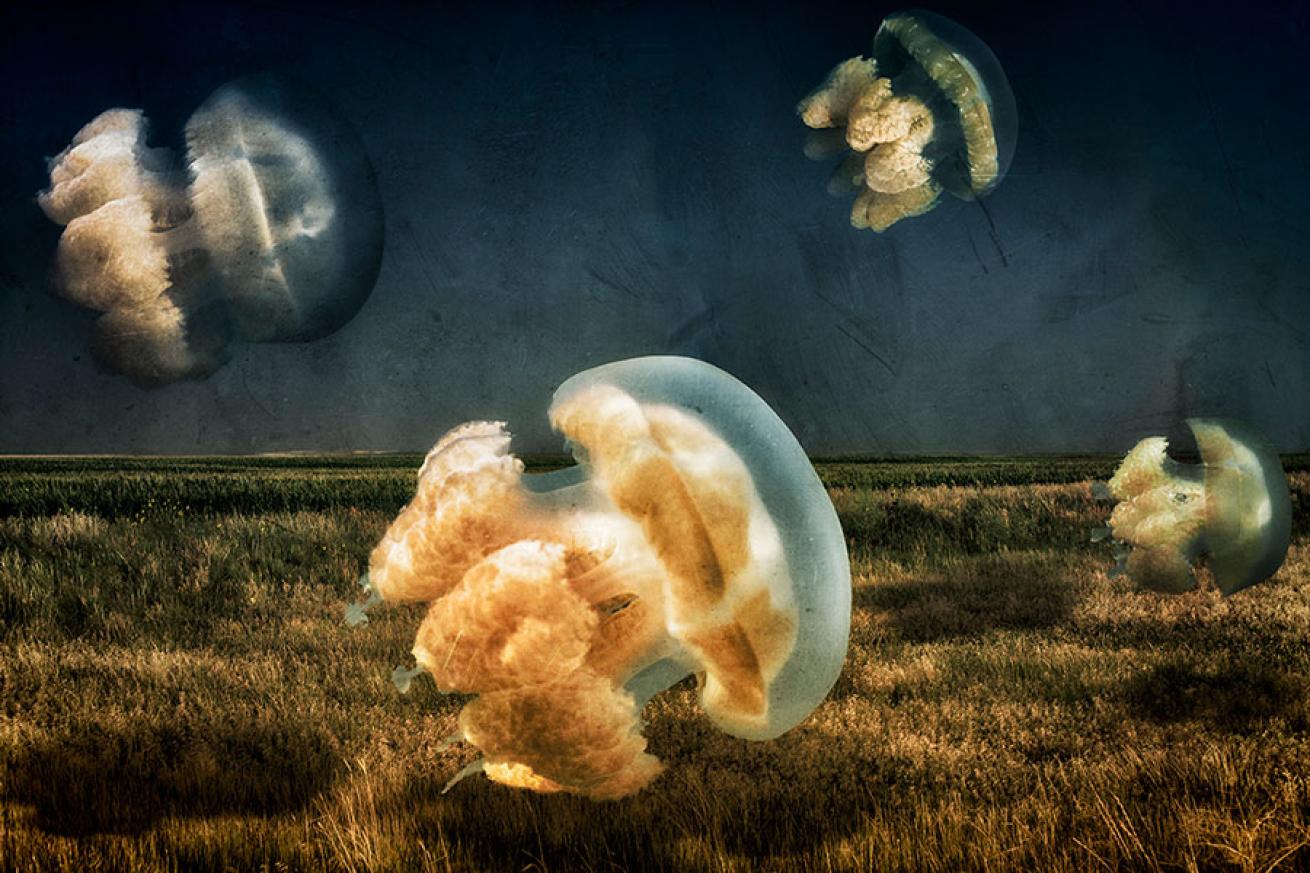
Conor CulverLocation: Jellyfish Lake, Palau
The jellyfish of Jellyfish Lake survive through the sunlight and follow the light throughout the day.
Hidden Moray's Hidden Haven
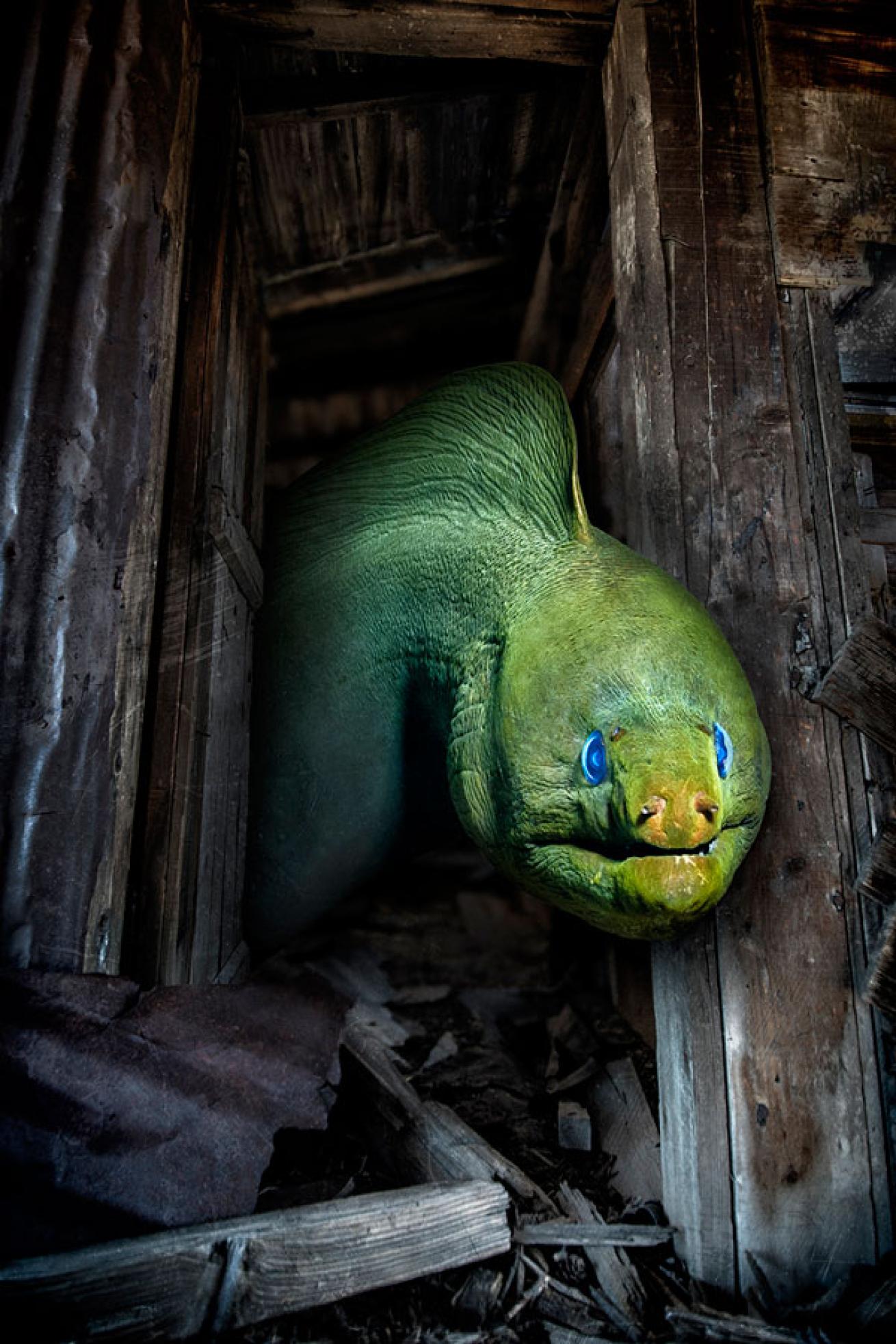
Conor CulverLocation: Bloody Bay Wall, Little Cayman
Green morays are often hidden within crevasses; this image is playing off that behavior.
Home Security
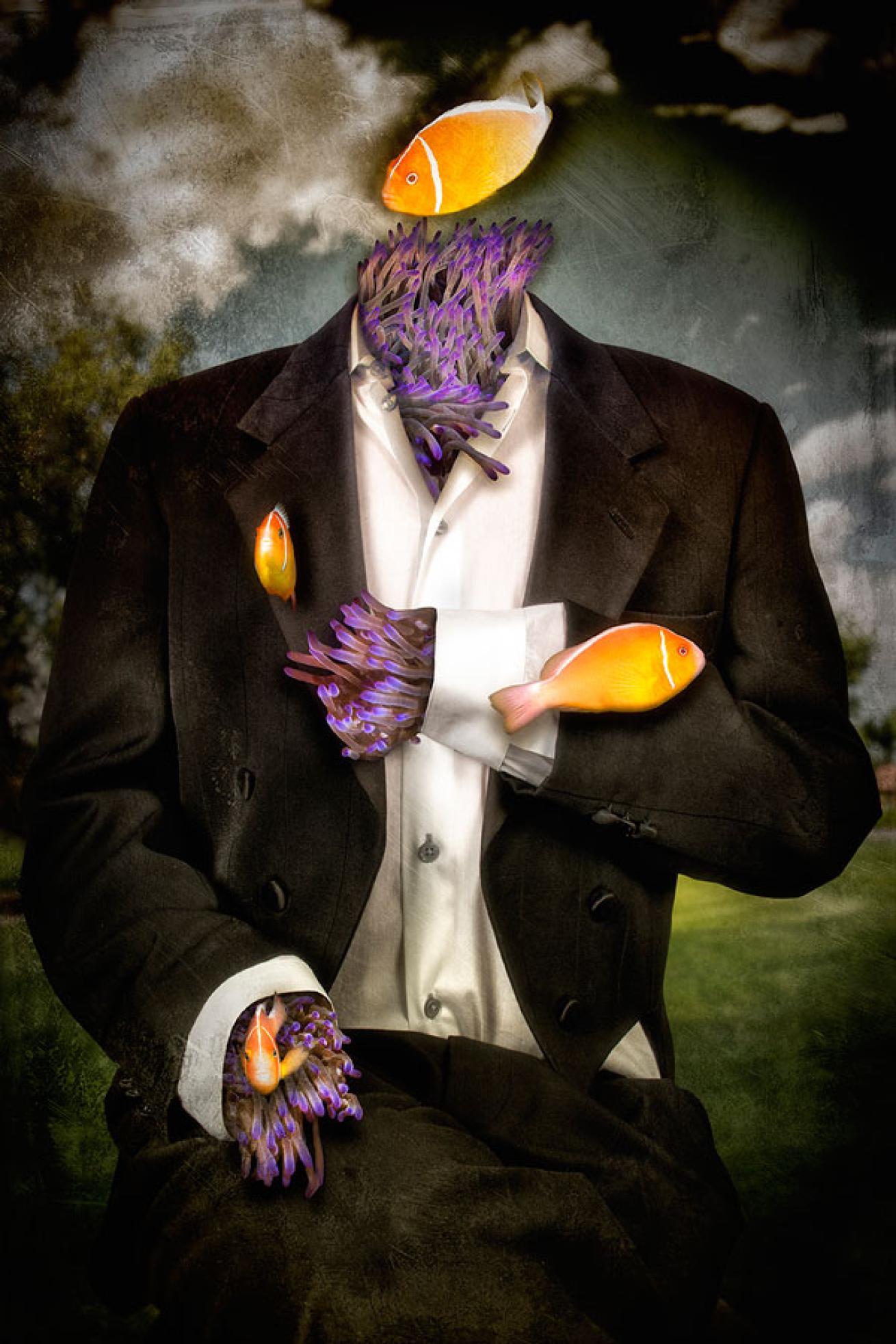
Conor CulverLocation: Blue Corner, Palau
Home is where we feel safe, like the clownfish feeling safe in their anemones.
Ink of the Octopus
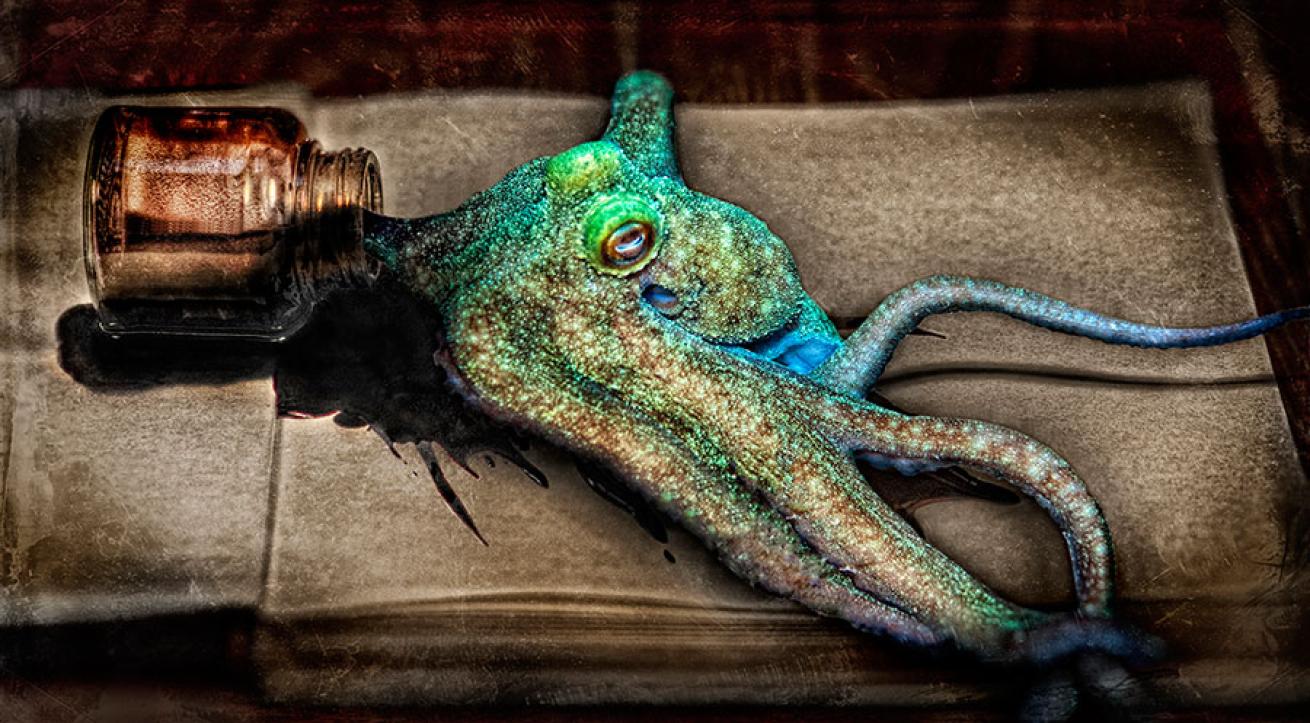
Conor CulverLocation: Bat Caves, The Dry Tortugas
When the octopuses' emotions are extremely high, they release their ink. Similar to how people let their emotions out with writing and art.
The Lobster Actor
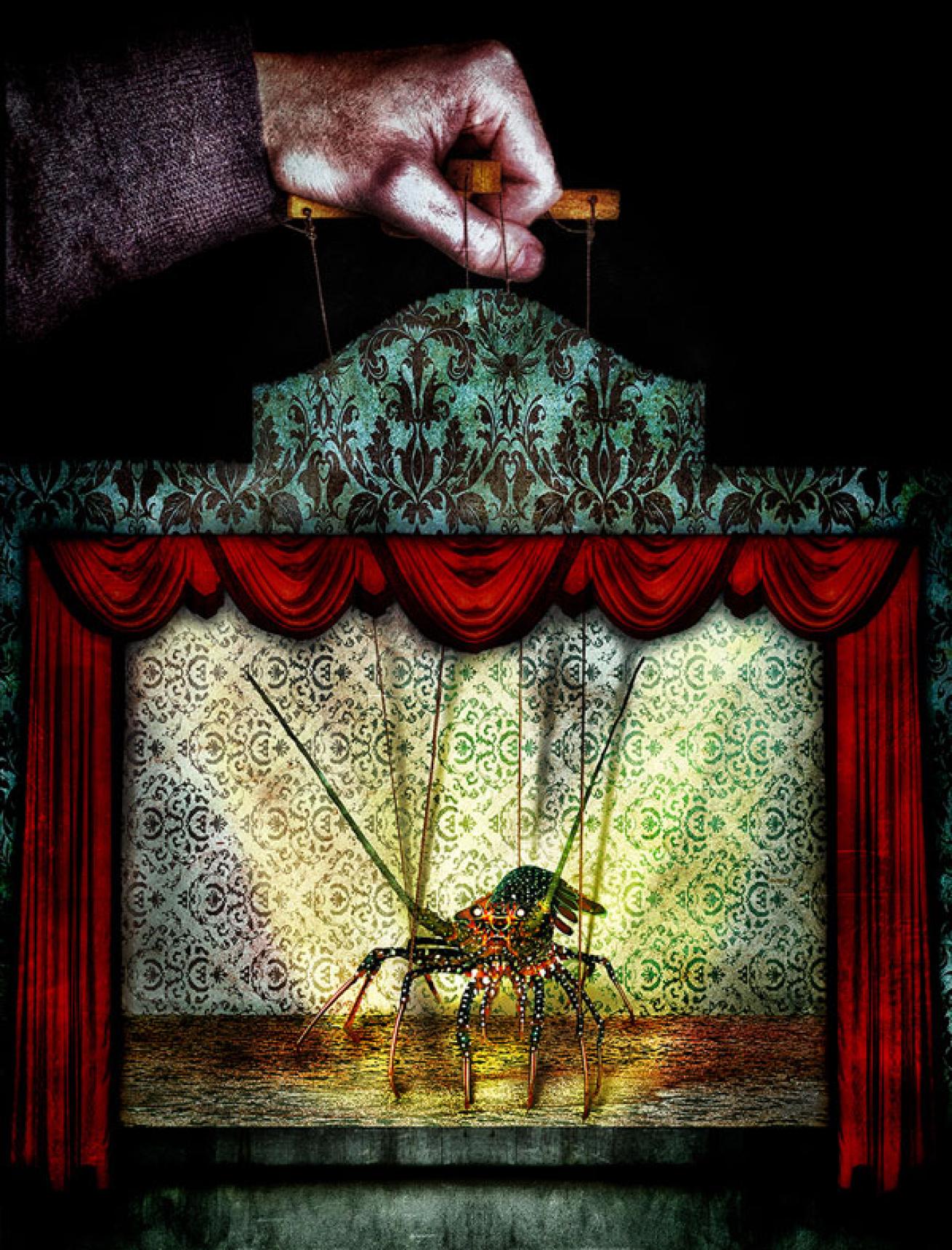
Conor CulverLocation: Bat Caves, The Dry Tortugas
Lobsters have a hard shell on the outside to protect what is inside, similar to what Hollywood actors must have in their careers.
The Cleaning Station
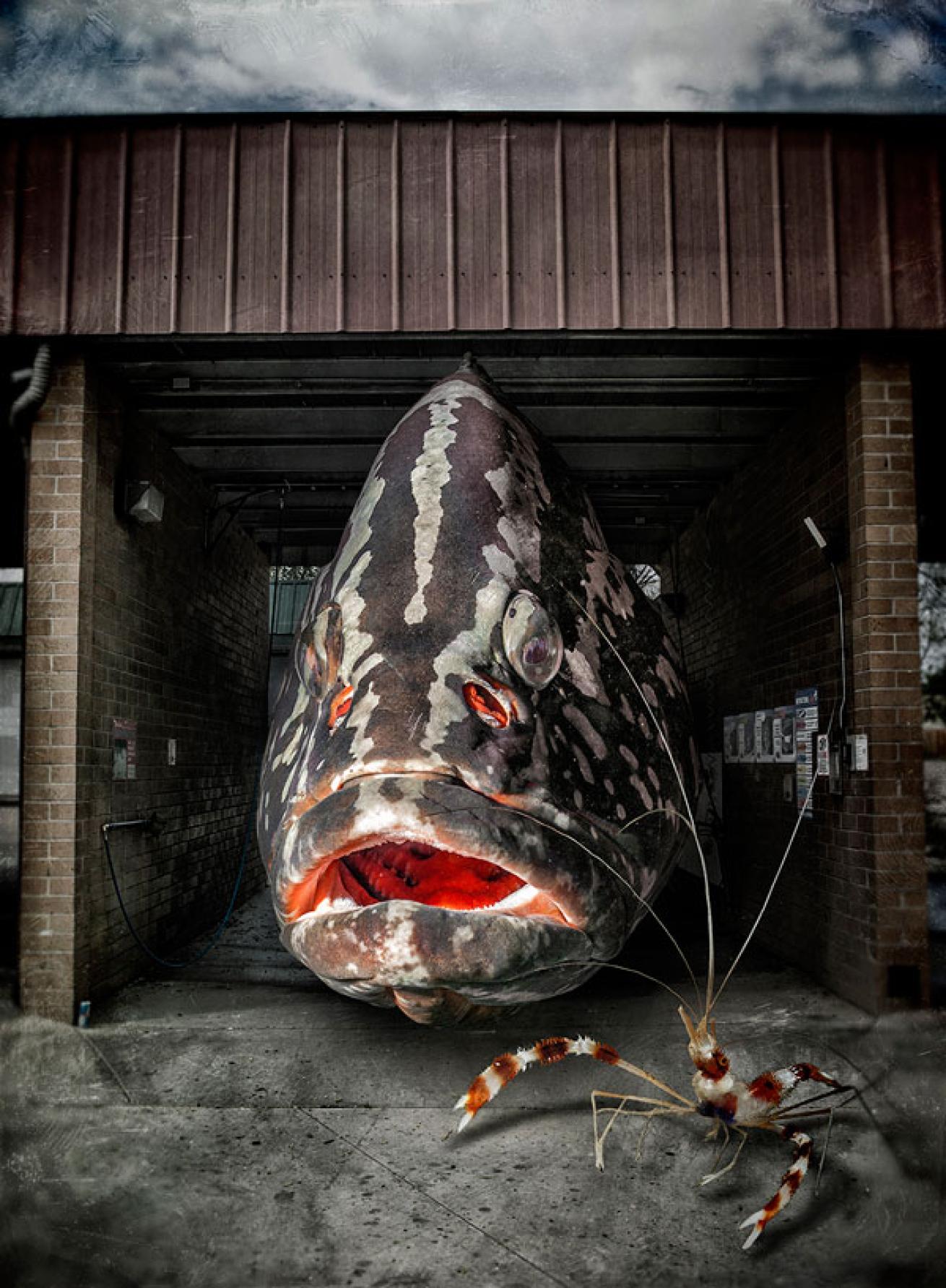
Conor CulverLocation: Bloody Bay Wall, Little Cayman
A cleaning Station re-imagined on land in a car wash.
Eagle Hunt
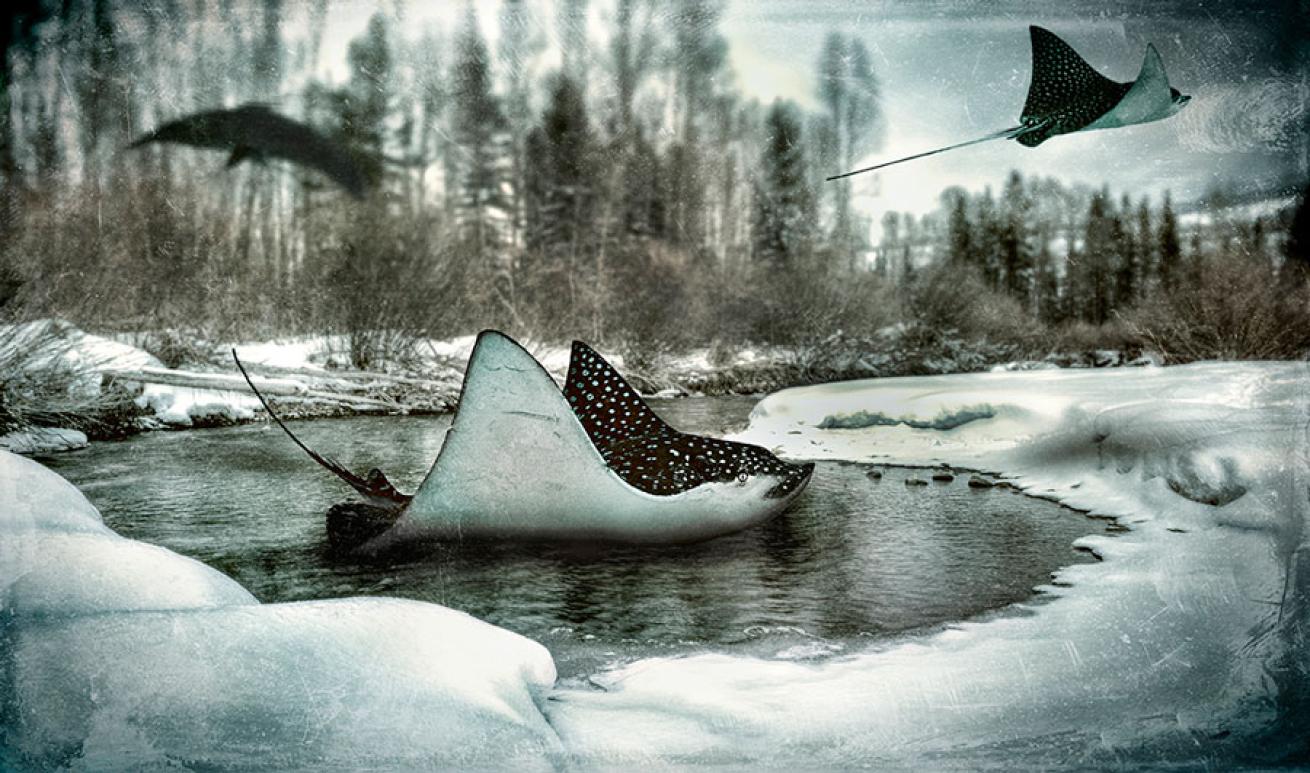
Conor CulverLocation: Bloody Bay Wall, Little Cayman
Eagle ray hunting is similar to how eagles hunt on land.
Barracuda Alley
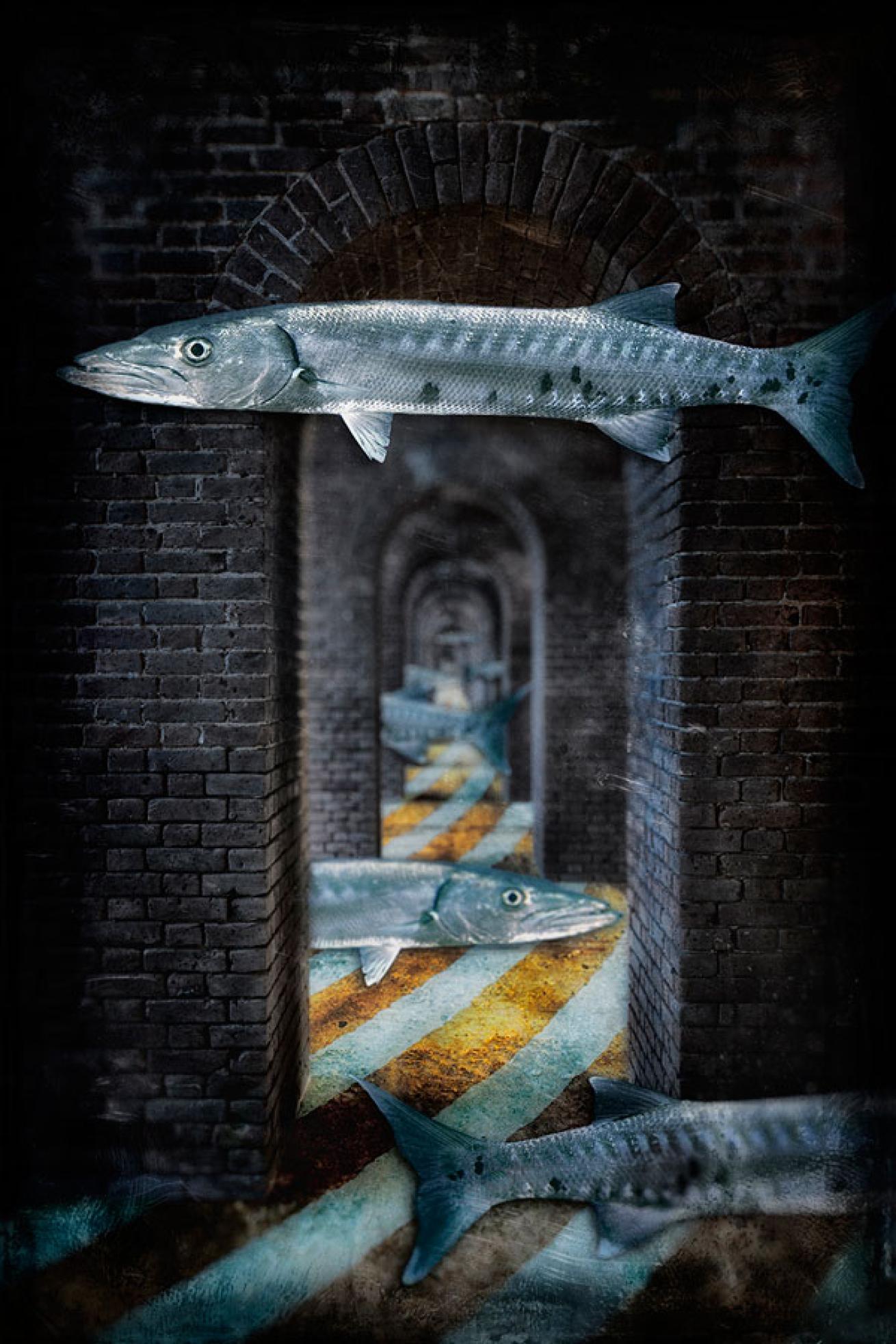
Conor CulverLocation: Bat Caves, The Dry Tortugas
Barracudas always have a sense of danger around them, this is my way of recreating that.
Ready for Bed
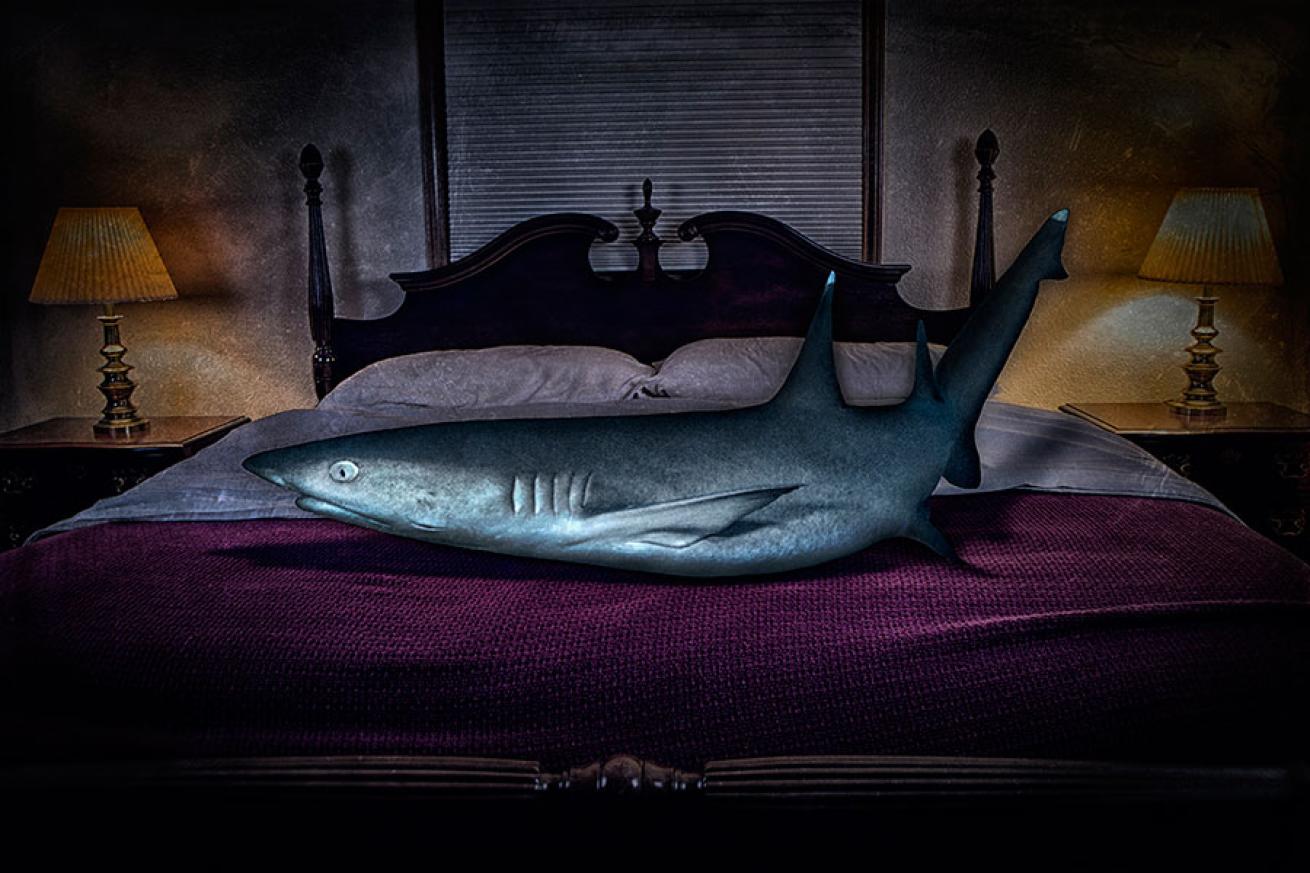
Conor CulverLocation: Blue Corner, Palau.
Whitetip reef sharks are often found sleeping on the ocean floor; this is playing off of that behavior.
Golden Tail Gold Mill
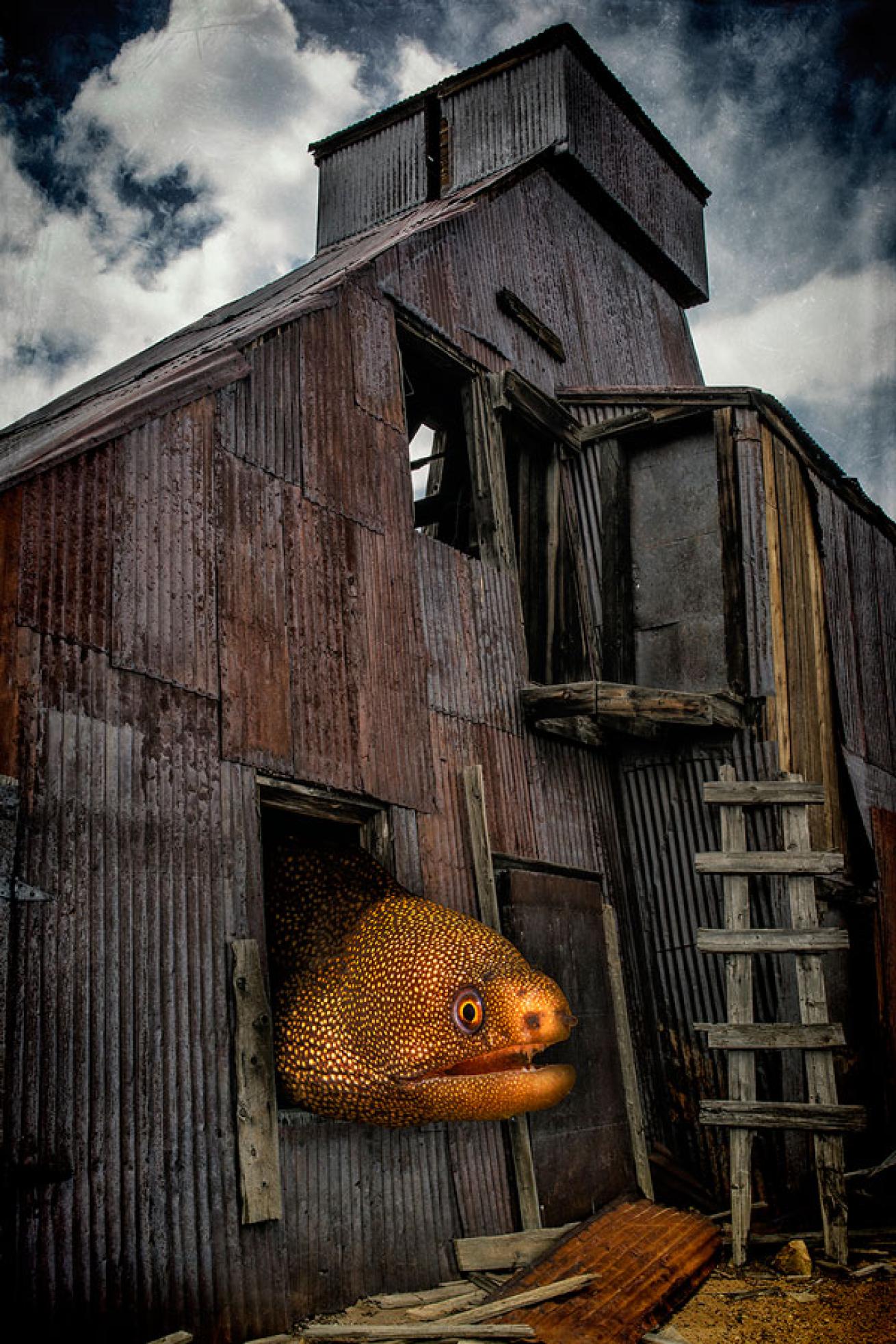
Conor CulverLocation: The Dry Tortugas
I played off the golden color of the moray and placed the animal into a gold mill.
To enter this year's contest, view all photo submissions so far and see an updated list of prizes, click right here.
Let's start with the basics.
I'm 28 years old and born and raised in Golden, Colorado.
Where do you get the ideas for your Underwater Surrealism series?
Some of my ideas are planned ahead, but always comes down to being able to actually get the shot. Most of the ideas for the images come after I photograph the animal. I think about something interesting about the animal, whether it’s the name of it, how it behaves in the wild, or the look of the animal that will begin to spark ideas in my mind. Some ideas come quickly, while others take time to develop. My dreams come out in my work as well; many of my dreams are of underwater life and the animals.
How do you decide what critters to place in what scenes?
Every image has its own meaning towards that specific animal. For example, a moray is similar to a snake or an eagle ray is similar to an eagle or hawk. I try to relate the underwater with the above water. I always want to convey something about that animal that is true in the ocean and then bring that story into a scene above the surface.
Do you shoot both the topside and underwater pieces?
Yes, I shoot all the images. I search for places to shoot in Colorado or when I'm traveling. I always have my camera on me when I travel. I photograph as much as I can. I might not use the background immediately or know what to use it for at the time, but I may use it eventually for an image. Some of my images are set up in my studio, for example the image "Ink of the Octopus" was shot on a blank journal with spilled ink with my lights set up the exact way I wanted.
What was the first pairing you did of an undersea critter in a terrestrial scene?
The first time I ever did a surreal scene with underwater imagery was a self-portrait of me holding a vase and a shark swimming inside the vase. It wasn’t until about three years later that I began to develop my ideas more vividly. I just started off creating surreal images for a long while of all different kinds of imagery, but ultimately developed the idea for Underwater Surrealism in my thesis semester at University of Colorado Denver.
My very first image in Underwater Surrealism was "Birth of a Seahorse" which really changed the way I approached my surreal work. I found my way to combine fine art with underwater photography. For this image, I cracked open an egg and built a bird's nest, then in Photoshop I took an image of a seahorse from Curacao I had photographed and edited the seahorse to look like it is hatching from the egg. The meaning is to play off how weird it is that the males are the ones who give birth. After this image, I finally found my style that I wanted to continue on with.
Have you ever shot a critter you wanted to use but just couldn’t make work in a terrestrial scene?
It happens all the time. Since I can't make the animals pose for me I am always limited by what I can get underwater or the way the animal is positioned creates many issues editing. Sometimes I can fix it, other times I'll have to leave that idea alone till I get another photo that will work. One example of when I had a problem is blending a spotted cleaner shrimp into a doorway because the shrimp is mostly transparent. No matter what I did, the shrimp never looked right blended into the doorway because it was so transparent and would get lost in the background.
What’s a typical viewer reaction to your work?
I usually have a positive response to my work. I've had divers who have very purist view to underwater photography that say they enjoy my work. They like it because it is different, they like it because the images are manipulated and they know that they are not real but their mind is tricked into believing the images. The main criticism I often get is "this is not photography" because photography is supposed to depict something real, but my response is that I am over photographic because I utilize all the tools I can and explore everything photography can do. As my favorite artist Jerry Uelsmann said, “The camera is a license to explore.” I use all the tools I can to explore everything photography has to offer which is why my reply is that I am over photographic.
Do divers react differently from nondivers?
Absolutely, divers often get what I'm saying about the animals and why they are in those scenes. Many times they even say they've had dreams like my images. Divers are attracted to seeing these animals in a new way. Non-divers usually have to ask what I'm trying to convey in the images, but they are still intrigued by my work.
Do you have a favorite among your undersea creations?
My favorites in the series are "Eagle Hunt" and "Ocean's Hospital." "Eagle Hunt" was a really lucky shot in Little Cayman of the eagle ray that stopped for a split second for me to get a good photo of him. I've always been amazed by how beautiful they are in the water and always wanted an image of one. The background is of the Blue River in the mountains of Colorado. I had to hike through the fresh snow to the riverside to get this image and it turned out to be perfect for the eagle rays.
"Ocean's Hospital" is one of my favorites because of the background image and the story of getting that photograph. I went by myself to an abandoned hospital in Ft. Carson, Colorado, that is reportedly haunted. I usually shoot alone so I don't feel rushed and can take my time, but I wish this time someone had gone with me because the place was extremely scary: There were weird noises bouncing everywhere and it was extremely dark. So I took the photo of the hallway with the door open so I could see, otherwise it was pitch black. The floor was green and full of trash. There were bizarre sounds coming from everywhere, so I set up my tripod quickly and took the shot and got out of there. I got the image of the hallway and blended nurse sharks and a hospital gurney into the scene. I think my favorite thing about my work is the experiences it creates for me. Obviously with diving, but also with the land images as well.
Where’s your favorite place to shoot underwater?
So far, Palau has been my favorite and Fiji is a close second. I loved Palau because of all the different kinds of diving: the wrecks, the walls, Blue Corner is an amazing experience, the lush coral gardens, and so many amazing animals. In the Caribbean, Little Cayman and Bonaire are my favorites. The massive walls in Cayman are incredible and Bonaire is full of so much life. I usually try to go to a place I've never been before to see as much as I can and experience as much as I can.
Can you tell us a little bit about your technical process in creating these images? (Or is that a trade secret?!)
Well it always comes down to what I can find on my dive trips. When I am diving, I try to cover every angle I can get the animal in its entirety in focus. I found out early in the series that trying to match depth of field later on the land images is extremely difficult to accomplish and doesn’t ever look right. After my trips, I begin to brainstorm how I can use a specific animal and blend them into something on land. Sometimes I research the animal to find something out that is unique about them to show in an image. I think of areas to shoot in Colorado or build a scene in my studio and just start shooting in all different angles to be able to match the underwater animal. Then I cut them out in Photoshop and slowly blend the images together. I create the shadows, depth of field, vignettes, and all the other adjustments I need. The key to creating seamless composited images is matching shadows and adding texture. Texture tricks the eye into believing that the image is real but your mind knows that it is not. My textures come from rocks, old scans of film, wrinkled paper, anything that will have an interesting effect on the image. Other ways to blend the images is to add faint gradients; this makes the different images look like they were shot in the same light. Most of the time, it is just experimenting with different edits to see what works best. Usually by the time I'm finished, the image barely looks like what I first dreamt it to be, and I like that. Every time I finish an image, I'm blown away by what I just made. That's the surrealist in me coming out and letting things just happen while editing. You can always go back and try again if it doesn’t work the first time.
Are your images or reproductions for sale and if so what’s best way for readers to contact you? Do you have any upcoming shows?
All of my work is for sale! The best way to get in touch with me is through email at [email protected], on Facebook:www.facebook.com/ConorCulverPhotographyandDesign, or on my website www.conorculver.com. All prints are customizable starting from 8"x10" up to 42" on the longest side and all range differently in price. Each image is limited to only 20 and are all signed, dated and show which print number it is (example: 1/20). I have two pieces at the Maidhof Brothers Gallery in San Diego right now but no other shows as of right now. My website and Facebook page post updates all the time on upcoming shows.
Who are your inspirations?
My parents for supporting me, they had me certified when I was 12 years old, took me diving, and helped me though college. My Dad gave me my first underwater camera back when I was 16 years old, and that is really where it started for me.
The professors at UCD who taught me and showed me the fine art side of photography, they helped steer me in the right direction with my work to make the work say what I wanted it to.
My inspirations in the art world, if I was never shown the works of photographers Jerry Uelsmann, Maggie Taylor, Ben Goossens, Robert and Shana Parke Harrison, Kerry Skarbakka and Man Ray I wouldn’t be creating the work I am today. Studying the surrealist movement has also made a huge impact on me to develop my work and ideas: Salvador Dali, Rene Magritte, Yves Tanguy, Joan Miró and Max Ernst.

